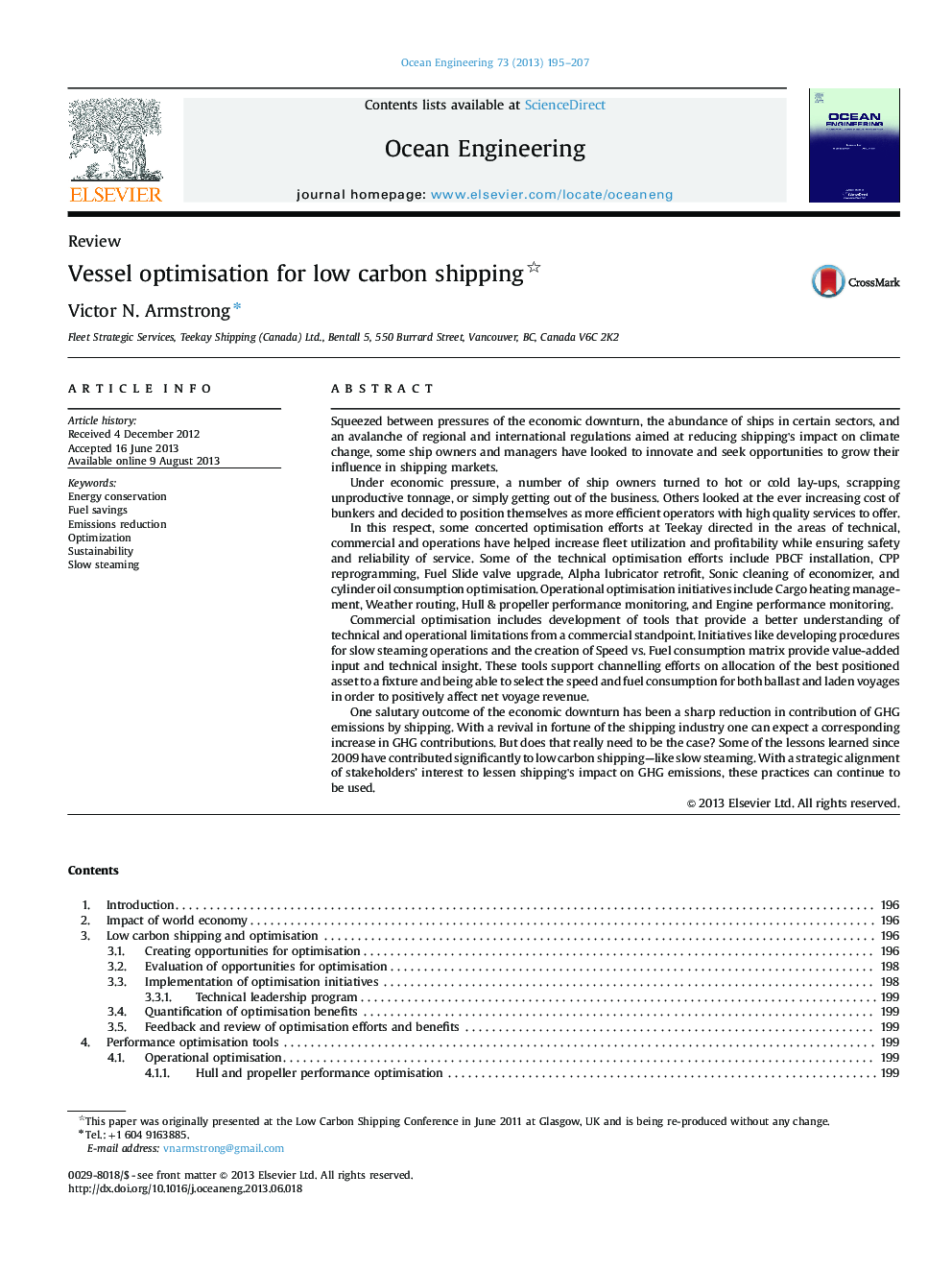| کد مقاله | کد نشریه | سال انتشار | مقاله انگلیسی | نسخه تمام متن |
|---|---|---|---|---|
| 1725799 | 1520717 | 2013 | 13 صفحه PDF | دانلود رایگان |

• Optimization at Teekay directed towards of technical, commercial and operations.
• Technical optimization—retrofit of PBCF, Fuel Slide valves, CPP re-program etc.
• Operational optimization—Cargo heating, Weather routing, performance monitor etc.
• Commercial optimization—Tools bridging technical & operational aspects.
• Lessons learnt contributed significantly to low carbon shipping e.g. slow steaming.
Squeezed between pressures of the economic downturn, the abundance of ships in certain sectors, and an avalanche of regional and international regulations aimed at reducing shipping's impact on climate change, some ship owners and managers have looked to innovate and seek opportunities to grow their influence in shipping markets.Under economic pressure, a number of ship owners turned to hot or cold lay-ups, scrapping unproductive tonnage, or simply getting out of the business. Others looked at the ever increasing cost of bunkers and decided to position themselves as more efficient operators with high quality services to offer.In this respect, some concerted optimisation efforts at Teekay directed in the areas of technical, commercial and operations have helped increase fleet utilization and profitability while ensuring safety and reliability of service. Some of the technical optimisation efforts include PBCF installation, CPP reprogramming, Fuel Slide valve upgrade, Alpha lubricator retrofit, Sonic cleaning of economizer, and cylinder oil consumption optimisation. Operational optimisation initiatives include Cargo heating management, Weather routing, Hull & propeller performance monitoring, and Engine performance monitoring.Commercial optimisation includes development of tools that provide a better understanding of technical and operational limitations from a commercial standpoint. Initiatives like developing procedures for slow steaming operations and the creation of Speed vs. Fuel consumption matrix provide value-added input and technical insight. These tools support channelling efforts on allocation of the best positioned asset to a fixture and being able to select the speed and fuel consumption for both ballast and laden voyages in order to positively affect net voyage revenue.One salutary outcome of the economic downturn has been a sharp reduction in contribution of GHG emissions by shipping. With a revival in fortune of the shipping industry one can expect a corresponding increase in GHG contributions. But does that really need to be the case? Some of the lessons learned since 2009 have contributed significantly to low carbon shipping—like slow steaming. With a strategic alignment of stakeholders’ interest to lessen shipping's impact on GHG emissions, these practices can continue to be used.
Journal: Ocean Engineering - Volume 73, 15 November 2013, Pages 195–207